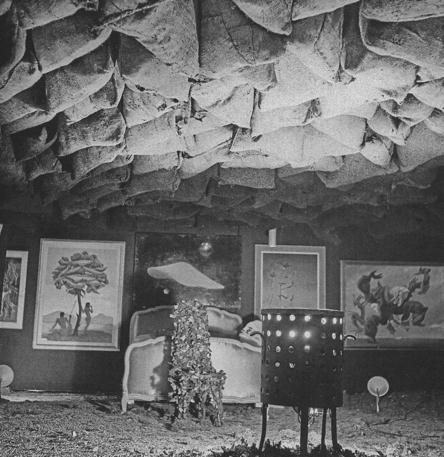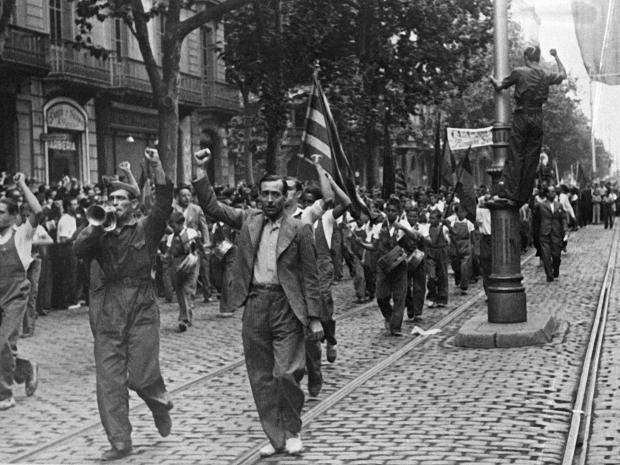THE FIRESIDE ANGEL: A Prediction Of War
At request from Mariela Rangel
The Fireside Angel is a fairy recent painting in consideration to most we have talked about. Made in 1937, it is a painting made by Max Ernst. It is a work of surrealism ( an art and literature movement in the early 1920s, that sought to release the creative potential of the unconscious mind), an art movement, other than Dada, participated in by Ernst. It has been painted with great splendor and vibrantly painted making the painting almost seem alive.
The Fireside Angel is a fairy recent painting in consideration to most we have talked about. Made in 1937, it is a painting made by Max Ernst. It is a work of surrealism ( an art and literature movement in the early 1920s, that sought to release the creative potential of the unconscious mind), an art movement, other than Dada, participated in by Ernst. It has been painted with great splendor and vibrantly painted making the painting almost seem alive.
Inspiration
Ernst made this painting for the Exposition International Du Surréalisme, an exhibition held on January 17 to February 24, 1938, in the generously equipped Galérie Beaux-Arts, run by Georges Wildenstein.
Some times called the 'Angel Of The Home', it was made by the German painter with a grand array of dynamic qualities, some more prevalent than the others. It is an oil on canvas painting. Showing a set of predictions made by Ernst in circumstances then, it is majorly inspired by the Spanish Civil War. An even involving many countries and had drastic impacts in the coming times.
 |
| An Exhibit at Exposition International Du Surréalisme |
Some times called the 'Angel Of The Home', it was made by the German painter with a grand array of dynamic qualities, some more prevalent than the others. It is an oil on canvas painting. Showing a set of predictions made by Ernst in circumstances then, it is majorly inspired by the Spanish Civil War. An even involving many countries and had drastic impacts in the coming times.
Interpretation and Features
- This painting is one of the few that are inspired by political activities and events.
- The painting was made shortly after the defeat of Spanish Republican in the Spanish Civil War. The fascist leaders had won the war due to the support provided to them by Italy and Germany.
 |
| A rally in Spain against fascist leaders during the Civil War |
- The main goal Ernst wanted to show was that Europe is descending into chaos which is only paving the way for the destruction that is to come. The ruins that fascism brings with it was spreading to all these countries and won't leave them with a leg to stand on.
- The painting has many eye catching as well as confusing details. And this doesn't exclude its name. The name 'The Fireside Angel' has been used to evoke a feeling of chaos and destruction. But then the use of the word angel confuses the observer as what has been presented to them is some grotesque figure which is nowhere near the typical portrayal of an angel. This leads one to seek a more biblical meaning. Ernst draws his audience to imagine the angel in the painting as if it were the angel of death from the seven plagues or a beast unleashed at the end of days. Max Ernst has used the title as a disingenuous ploy to engage as well as intrigue the audience.
 |
| A typical portrayal of an angel |
- The original title for the painting was 'the triumph of surrealism', this was changed later due to Ernst's personal feelings about the growing fascism in Europe. There were multiple differences in the two :
- The main figure was made more dynamic in the final version.
- The image has been zoomed in to show a larger view, this leads the observer to shift focus on the features of the figure instead of drawing larger attention to the background and area of the canvas.
- The final version shows a certain shift in the features of the beast from animal to human, this wasn't present in the original and has been used to unveil the true nature of fascism.
- The painting doesn't have a set color tone, it has a dynamic palette using colors from the entire spectrum. Yellow and white in the head; blue, green, red and browns for the rest of the angel's body.
 |
| Some of the varied colors used in the painting |
- The use of darker colors symbolizes the inherent darkness and cruelty in the government such as the Nazi party.
- The use of oil in the painting has leads it to have a more fluid form, hiding any brushstrokes or irregularities.
- There is the use of faded and distinct edges and lines at places which causes the observer to look that them closely.
 |
- The use of shading and diagonal lines helps to portray the idea of this giant moving clumsily and rapidly across a proverbial European wasteland. The lack of uniformity further enhances the feeling of chaos that strongly impacts the viewer.
 |
| The proverbial European wasteland in the background |
- The creature in the painting is seen to be spawning. This aspect of the painting is trying to reveal how these fascist governments were spreading and becoming more abundant. It serves as a warning that fascism needed to be stopped or else more of these creatures may spawn and create even more trouble for the world.
 |
| The Angel as seen to be spawning |
- The happening of the World War II was what Ernst had predicted in 'The Fireside Angel'. This was the destruction and chaos that would befall them if fascist governments weren't controlled by more liberal powers.
- Ernst himself was shocked that his predictions in relation to the outcomes of the Spanish Civil War for Europe actually came true. The painting was Ernst way of delivering a cautionary tale about the corruption present in military controlled governments in a way that had characteristic of surrealism yet practical enough for the ordinary man to get the thoughts behind the artwork.
- It is presently located in the Metropolitan Museum of Art, New York
 |
| The Metropolitan Museum, New York |
Hope you found the information and interesting. Please leave a comment, your feedback is very appreciated. Everyone is also welcome to leave requests. Please subscribe for newsletter (option on the top) also follow me on Instagram @detail_artwith_a12 for instant updates.
Signing Off
A.






Comments